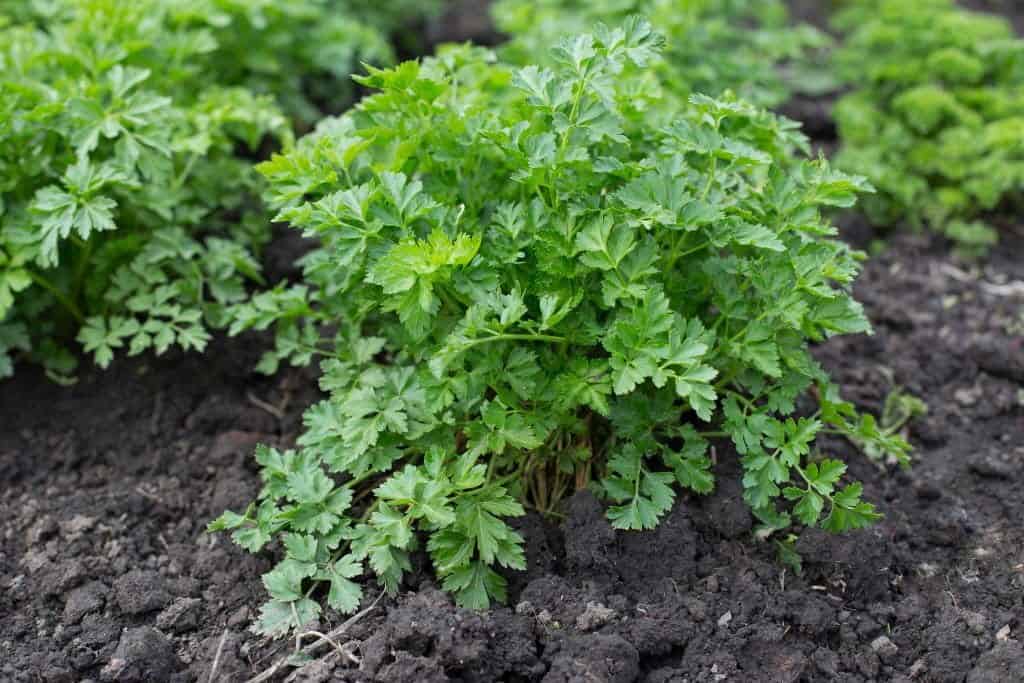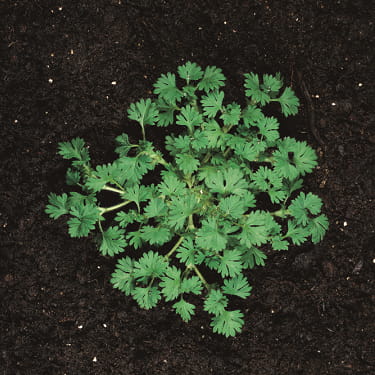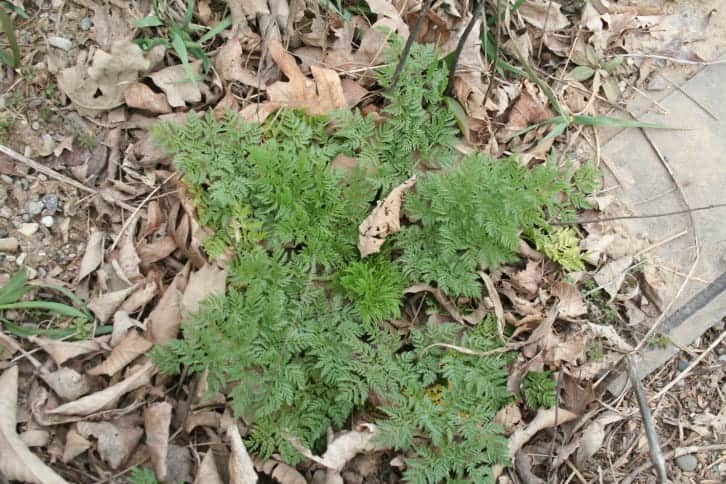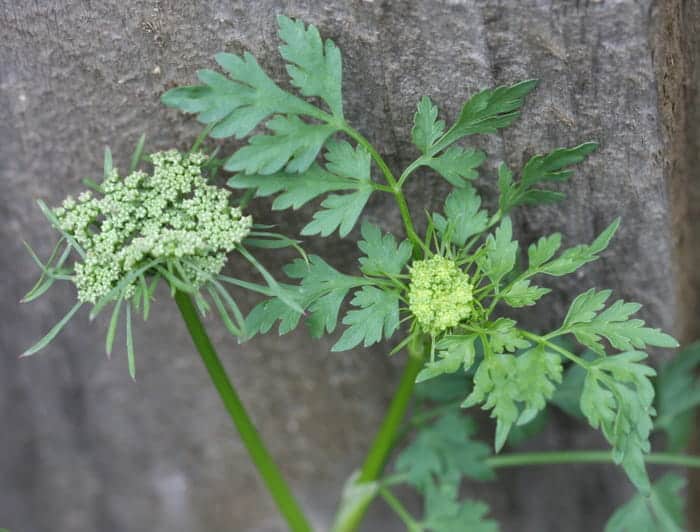There are many weeds that look like parsley.
Parsley, sometimes known as garden parsley, is a flowering plant in the Apiaceae family that is native to the central and eastern Mediterranean region but has spread throughout Europe and is commonly farmed as a herb and vegetable.
In European, Middle Eastern, and American cuisines, parsley is commonly utilized. As a garnish, curly leaf parsley is frequently used.
Many foods are served with fresh green chopped parsley sprinkled on top throughout Central Europe, Eastern Europe, and Southern Europe, as well as Western Asia. Flat-leaf parsley is similar, but it is easier to grow and has a richer flavor, according to some.
Root parsley is very common in central, eastern, and southern European cuisines, where it is used as a snack or a vegetable in many soups, stews, and casseroles.
However, there are many species of trees that resemble parsley. Read on to know more.

Weeds that look like parsley?
There are many plants that look like parsley. You’ve probably seen it a few times, so stay tuned for the list below.
1. Parsley Piert

Parsley piert is not related to parsley, yet its leaves have a similar appearance. It belongs to the Rosaceae family. It is endemic to Europe, North Africa, and western Asia, as well as North America. It is a common plant found on the cultivated ground with leaves that resemble parsley leaves and also resemble a lady’s mantle.
It turns a dull green color and can be seen on roadsides, sporting fields, lawns, golf courses, and other places. It prefers well-drained soil and can thrive with few nutrients. Its root is thin and branching, and it can withstand a variety of situations. The leaves are wedge-shaped and on a short stem, with three clefts.
The leaves are wedge-shaped and on a short stem, with three clefts. It produces flower clusters of 10 to 20 flowers that bloom from July to November.
2. Poison Hemlock

Poison hemlock is a biennial plant in the Apiaceae family that can reach a height of five to 10 feet. All parts of this plant, including the seeds, roots, stems, leaves, and flowers, are poisonous. It contains alkaloids that are potentially harmful to the neurological system, and even a small amount can cause respiratory collapse and death.
It can induce a burn-like skin reaction if you don’t eat it but contact it. It was used to execute convicted individuals in ancient Greece. Socrates was actually put to death and forced to drink hemlock.
It originated in Europe and North Africa, but it has now spread throughout North America. It can be found in disturbed places along highways and trails, as well as in moist regions near streams.
The stems are hollow and lacking in hair. They’re covered with purple splotches and streaks. They bloom in late spring and grow in spherical clusters, with flowers that resemble other white umbel-shaped flowers.
There are five petals on each flower. Small green fruits with curved ribs grow from the flowers, and the seeds are extremely deadly. They have the appearance of parsley, anise, and fennel. They can reach a height of eight to 10 feet.
3. Hedge Parsley

Hedge parsley is an invasive weed that thrives in a variety of environments. It spreads swiftly and leaves behind seeds that cling to clothing and animal fur.
It is native to southern Europe, although it can be found in pastures, fields, and on the edges of woodland regions in the United States. It can also be found alongside highways and in gardens. It reaches a height of around two feet.
The stems of hedge parsley are spherical and slender, and the leaves are toothed like ferns. Short white hairs cover the leaves and stems, and a cluster of white flowers emerges at the end of the season.
They gather together in huge clumps that soon spread. It may grow in the sun or in the shade and outgrows many other plants. Pulling the plants out is the most effective method of control.
4. Cow Parsley

Cow parsley is sometimes known as wild chervil and Queen Anne’s lace, however, it is a related but distinct weed. It has waxed smooth stems with hair on them.
The leaves resemble poison hemlock. It features a celery-shaped leaf stem with ribs but no spots. The leaves are bright green in color and have a matte surface. They are substantial in size.
It has white petals and blooms earlier in the year than other weeds. It is a perennial or biennial plant that thrives in moist soil.
The leaves are separated into leaflets that look like feathers. It is a carrot family member that is endemic to northern Europe. In North America, it grows as an invasive plant.
5. Fool’s Parsley

The invasive weed fool’s parsley has slender smooth green stems and reaches one to two feet tall. Similar to parsley, it features dark green leaves that are segmented and finely split.
When you crush the bottom leaves, they have a foul odor and are on thin stalks. They feature a flat-topped umbel with umbellets that produce eight to twelve stalked blooms each.
They are distinguished from parsley by the absence of an involucre, or whorl of bracts, near the base.
Flowers with five white petals, notched tips, and slender bases are produced. True parsley blooms are yellow, which distinguishes them.
This weed thrives in fields, disturbed places, and sunny damp locations. With the active ingredient cytosine, they can induce poisoning. It causes a burning sensation in your mouth, which can be rather unpleasant.
6. Queen Anne’s Lace

The herbaceous weed Queen Anne’s lace, also known as wild carrot or bird’s nest, is native to Europe and parts of Asia. It can be found in Australia and North America as well.
It’s a biennial plant that blooms in the second year between spring and early fall. It features lacy white blossoms, and it is not harmful. It does, however, resemble a number of dangerous plants, including poison hemlock.
On a flat-topped umbel with a purple flower in the center, the blossoms are thick. The leaves are hairy on the underside and have a parsley-like scent. The roots are also hairy and white, while the stems are short and covered in white hairs. It can reach a height of four feet.
It’s a poisonous weed that poses a threat to cattle and crops. Because it looks so much like poison hemlock, it’s crucial to know how to spot it.
Final thoughts
There are plants that resemble parsley, but they are not poisonous. On the contrary, there are some species that are extremely toxic. As a result, it is best to take precautions to safeguard your health. I hope you found this article useful.